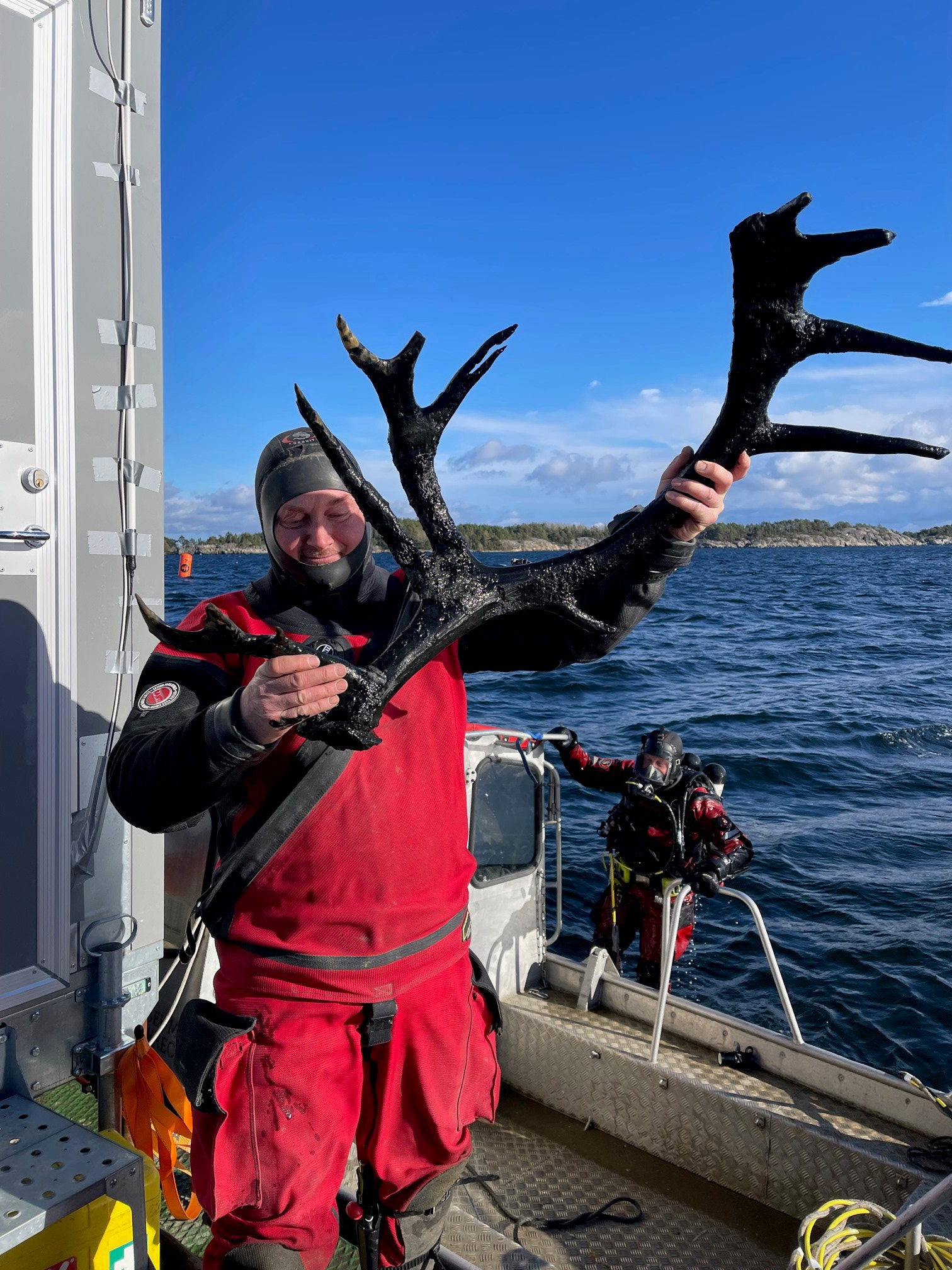
A 500 year old horn. Photo: Jim Hansson
During an earlier survey of the wreck, maritime archaeologists discovered that the ship was carrying many barrels filled with osmund iron. Never before had so much osmund iron been found in Sweden. The wreck was thus named the Osmund wreck.
“The iron researchers have struck gold!” says maritime archaeologist Jim Hansson. “The ship also had bundles of bar iron on board, indicating that there was a transitional period during the reign of Gustav Vasa. He wanted to ban the export of osmunds because the size of these lumps of iron was more difficult to control. But it took a while for the bar iron to take over.”
To determine what else the ship was loaded with, a test shaft was dug this October. Additional wooden barrels of osmunds were revealed. Among them were also plenty of fish bones and something that perhaps could be butter, which would be unique.
“They might have been provisions for the crew, but since the barrels were in the open cargo hold it’s more likely that they were intended for export,” Hansson says.
One of the examined barrels might contain potash – potassium carbonate – that was used as a preservative as well as to manufacture soft soap and other soaps.
“We also found a makeshift anchor cable made of hemp that still smells like tar,” Hansson says. Tar was also an important export product sold on the other side of the Baltic Sea.
Parts of the barrels will now be sent for analysis to determine the content with more accuracy.
Unusual finds include origin marks, which are marks carved in the shape of crosses and triangles, found on some of the barrels’ lids – a personal signature. The maritime archaeologists will now attempt to compare these with origin marks from different archives, both within and outside Sweden. The barrels also appear to have been reused, as they have origin marks on both sides of the lids.
“We try to understand if these personal signatures tell us anything about the seller, buyer or manufacturer,” Hansson says.
Previous investigations of the ship reinforce this theory. It is known that the ship was repaired in 1553 with wood from southern Finland. One barrel has been dated to 1540, which means that at this time it was reused.
Also noteworthy from the excavation are barrels that open from the side.
“One interpretation is that the customs house at Järntorget in Gamla Stan could peek into the barrels. There was a lot of cheating going on with osmund iron. People were afraid that much of a barrel was filled mainly with stones, with osmunds only at the top of the barrel. So the smuggling problem existed as early as the mid-16th century.”
Samples of the osmund iron have now been taken from barrels in different places on the ship to see if their quality differs. Other finds unearthed include parts of a leather shoe, a wooden heel and a large antler of reindeer or deer, most likely an export commodity.
The ship is clinker-built with several medieval construction details. It also appears to have been built during a transitional period.
“The Osmund wreck is unique. I’ve never seen a ship construction like this – every dive provides new information,” concludes Hansson enthusiastically.
Research into the Osmund wreck and its cargo is taking place in collaboration among the museum, the Historical Metallurgy Group at Jernkontoret and
Stockholm University. The group is also in contact with maritime archaeologists in Germany and Poland.